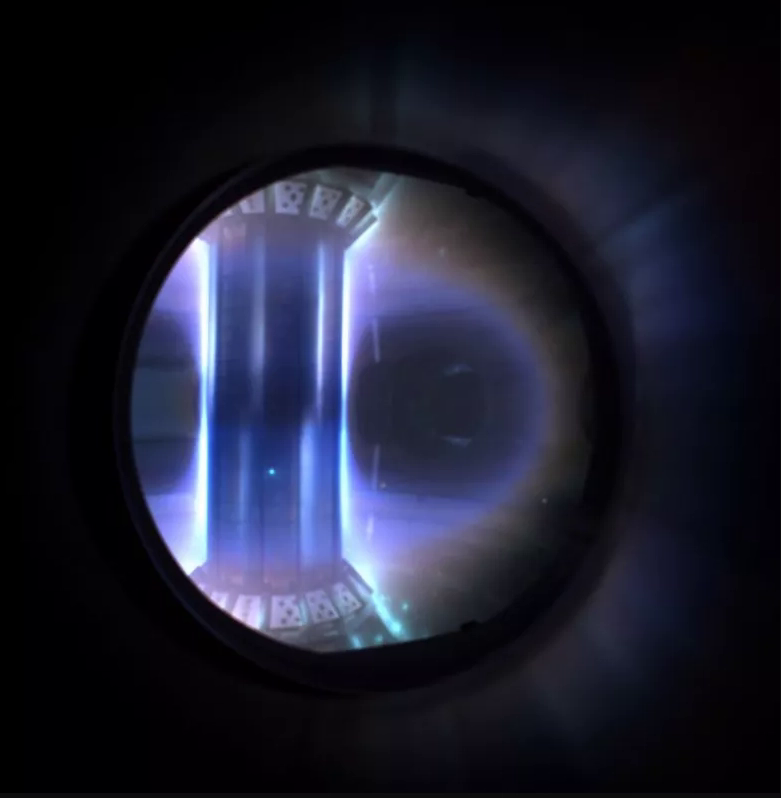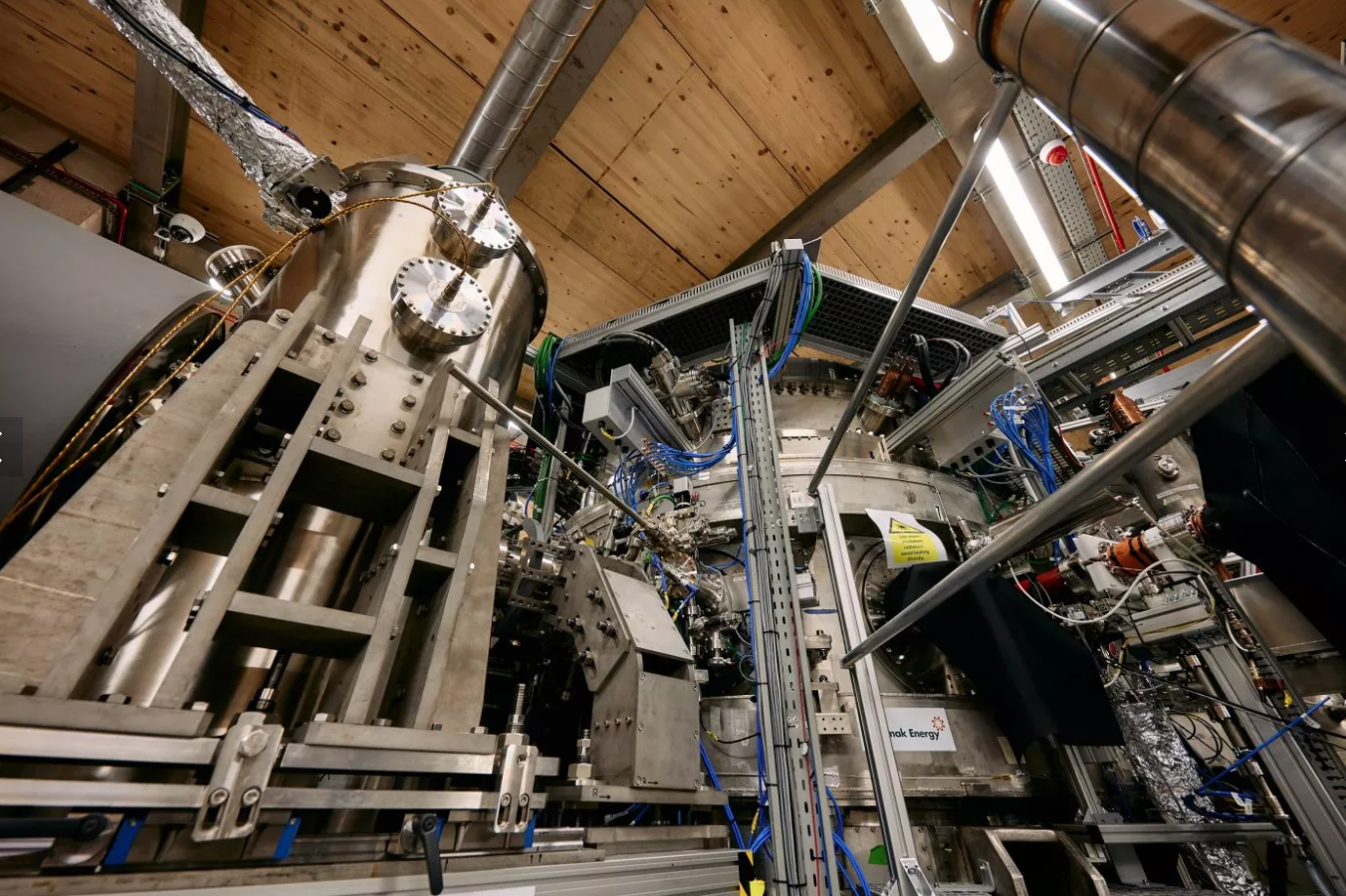What does the inside of the ‘Artificial Sun’ look like when plasma is formed at 100 million degrees Celsius?
- Tram Ho
What does the inside of a nuclear fusion reactor look like? ” It seems like the future ,” said Stuart White, Tokamak Energy’s head of communications. ” A spaceship. It’s so striking, powerful, and exciting. You can’t take your eyes off it .”
Accordingly, nuclear fusion (or fusion) is a technology that generates energy in a way similar to how the Sun ‘works’. It works on the principle of fusion, when two light nuclei of hydrogen, deuterium and tritium, are combined to form a heavier helium nucleus and release energy. This means that creating a fusion reactor is comparable to “creating an artificial Sun on Earth and plugging it into it to use”.
The moment a fusion reactor forms plasma at a temperature of 100 million degrees Celsius. Video: Tokamak Energy
Unlike nuclear fission—the nuclear reaction currently used in the energy sector—fusion does not produce radioactive waste.
According to estimates by the US Department of Energy, fusion produces three to four times more energy than fission, and does not release carbon dioxide into the atmosphere like fossil fuels do.
At the same time, the risk of nuclear accidents from this reaction is almost nonexistent. Fusion is a very fragile process that will shut down within seconds if the right conditions are not maintained.
For decades, fusion has been seen as the clean energy solution of the distant future. Thanks to advances in this area, this technology could be fully expanded within the next 10 years. One company that aims to be a pioneer in fusion is Tokamak Energy Ltd, a UK-based commercial fusion energy company.
The company uses a machine called a spherical tokamak fusion reactor, which is shaped like a donut. This machine uses powerful magnets to restrain a stream of super-hot plasma.

The interior of the tokamak nuclear reactor produces superheated plasma, the medium needed for nuclear fusion to take place. Photo: Tokamak Energy
Plasma – sometimes called the fourth state of matter, after solids, liquids and gases – is essentially a mixture of negatively charged electrons and positively charged ions that have been separated. by the extremely hot temperatures of their surroundings.
When the hydrogen atoms are overheated into a plasma, they become positively charged and repel each other. In the Sun, strong gravity creates extremely high pressures that overcome this repulsion. But such high pressure is nearly impossible to reproduce on Earth. Therefore, we have to heat the plasma to a higher temperature.
Chris Kelsall, CEO of Tokamak Energy Ltd, told Newsweek: “As the temperature gets higher, they (the hydrogen atoms) move at such a high speed that they overcome those repulsions and will actually start to start. merge head”.
The process requires temperatures of up to 100 million degrees Celsius, six times higher than the temperature at the core of the Sun.
” When they fuse, [the hydrogen atoms] create a helium atom and a spare neutron that carries 80 percent of the energy from the reaction, which is what we end up with ,” said Kelsall.
Video taken by Tokamak Energy shows the moment the fusion reactor reached the 100 million degrees Celsius mark.
The whole process takes place in a few milliseconds, and only a very small amount of fusion actually takes place. To be fully scalable, fusion power plants would need to run for hours on end. However, such fusion power plants do not yet exist.
To sustain these extreme conditions, the superheated plasma must be contained within a small area. This is because the Tokamak-type toroidal magnetic chamber contains coils of magnetic magnets capable of generating a magnetic field 100,000 times that of the Earth’s. This magnetic structure keeps the hottest parts of the plasma away from the Tokamak wall, creating an insulating effect that allows the furnace to reach very high temperatures for long enough for reactions to occur.

Photograph of the ST40 spherical tokamak nuclear fusion reactor at Tokamak Energy Ltd, encased in cooling and diagnostic equipment. Photo: Tokamak Energy
“ You basically have a very large main magnet system ,” says Tony Langtry, Tokamak Energy’s head of engineering.
” The magnetic field required to drive the plasma is created by passing an extremely large current through several conductors… When current passes through these conductors, they create a magnetic field. Because plasma also carries an electric current. , it reacts and we can manipulate the plasma by the magnetic field. ”
The tokamak model currently operating at Tokamak Energy is the ST40, which uses copper magnets to control plasma.
” Copper is a very good conductor of electricity, so when you run an electric current through it, it creates an electromagnetic field containing plasma ,” Kelsall said.
However, common materials like copper have resistance, which resists electric current and converts some of its energy into heat, resulting in energy being dissipated. Superconductors, on the other hand, are materials that don’t generate resistance and don’t waste heat under the right conditions. This means that the superconductor base will be a key factor in enhancing the performance of the ST80 – Tokamak Energy’s next generation of tokamak furnaces. This generation of furnaces using superconducting materials will generate stronger, more efficient magnetic fields to control the plasma when launched in 2026/27.
After the ST80, the team will begin work on ST-E1, a commercial pilot fusion reactor that aims to demonstrate the technology’s ability to deliver electricity to the grid. Tokamak Energy hopes that this will be completed in the early 2030s.
Refer to Newsweek
Source : Genk
